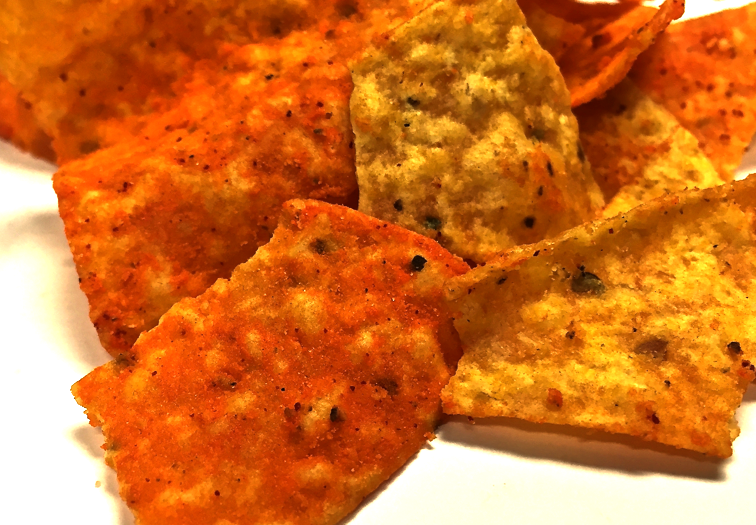

Co-Written by: Carrie Hartford
Everyone enjoys seasonings in their food and particularly on their chips. I love eating chips that leave my fingers coated with cheesy goodness. I especially love the chips that have the extra seasoning on them. However I don’t like the chips that seem to have missed the seasoning station and taste rather plain.
Food manufacturers understand this attitude of their customers and know that seasonings on potato chips and other packaged foods are important. Giving customers satisfaction by providing consistently high quality products has developed into a large and competitive market. Seasonings provide most of the satisfaction and are used by advertisers to sell their products. Research and development departments spend time figuring out just how much is enough and will keep the customer coming back for more. Unfortunately, not all the product ends up with just the right amount.
Some mal-distribution problems are due to seasoning not sticking to the product and being shaken loose during handling of the packet. Others may be due to feeding or handling problems of one or both (product and seasoning) during the manufacturing process. During manufacturing, this is a two edged sword.

The process usually involves adding oil to the product to make it sticky and then adding the seasoning to stick onto the oil layer. Having the seasoning cohesive and sticky may be an advantage for keeping the
seasoning on the product during handling of the packet, but makes the seasoning difficult to handle and spread uniformly. The product, for example potato chips, may be oddly shaped with high aspect ratio and no two pieces being exactly the same. This is a problem for adding both the oil layer and the seasoning uniformly to all surfaces. Getting it wrong may result in not enough seasoning, leading to oily feel and bland taste. Or too much seasoning can lead to messy fingers and overwhelming taste. I don’t mind the latter experience, but more importantly, the overall taste experience must be consistent.
While food technologists have developed the art of adding seasonings, one constant is that both the food and the seasoning must be fed uniformly and reliably before they can do their job. Lucky for them, that is J&J’s strong suit. We have spent many years inspecting and solving flow and feeding problems. We also have the developing both analysis techniques and equipment for easy and difficult materials. Find out how Jenike and Johanson engineers can help with your feed or handling problems.






